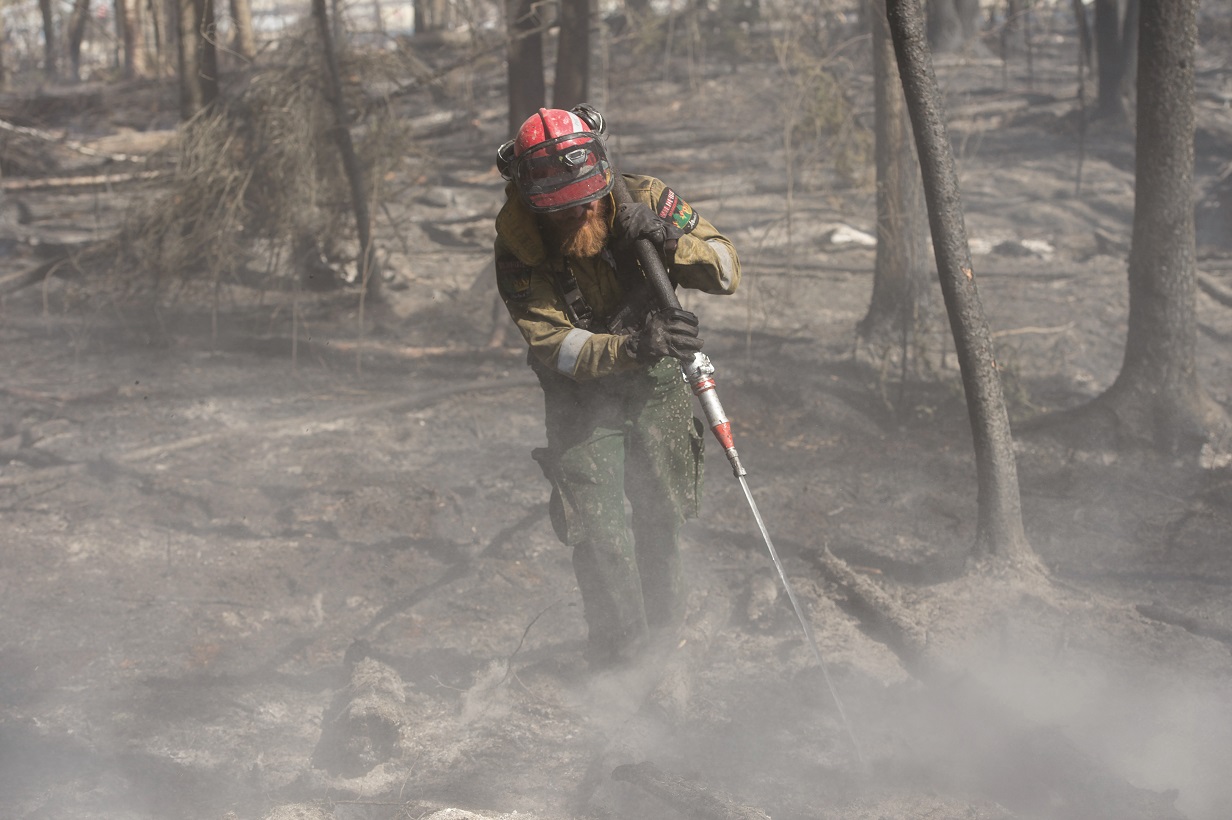
The Fort McMurray wildfire from 2016 was officially declared extinguished on August 2, 2017. Photo by Chris Schwarz / Government of Alberta.
In early May 2016, a large but relatively benign fire burning southwest of Fort McMurray, Alta., suddenly turned into a blaze so fierce it quickly became known as "The Beast." Dozens of municipal fire crews and wild-land forces from around the province and beyond were sent to save the city.
As crews began to gain the upper hand and weary firefighters returned from the front lines, University of Alberta epidemiologist Nicola Cherry was there to meet them, to begin investigating the toll the exposure to heavy smoke and ash had taken on their respiratory systems.
Over the following weeks, Cherry's team tested more than 350 firefighters across the province.
Understanding how those who fought this enormous fire have been affected both physically and mentally is at the heart of a special two-year, $500,000 grant from the Canadian Institutes of Health Research, the Canadian Red Cross, Alberta Innovates and other partners.
"Of the people who went to the fire, we want to know if they have any particular clusters of ill health that we didn't see in comparison groups," says Cherry.
Cherry says her team is also focusing on the kinds of mental-health support systems that were in place in the more than 50 departments throughout Alberta that sent firefighters to Fort McMurray.
Her team's search for best practices also includes finding factors that might have mitigated the negative health effects of the fire, such as the types of masks firefighters wore and for how long.
"If one force did something that worked particularly well, we can recommend it to everybody else," she says.
Wildfire-related projects receiving funding
Pediatric resiliency
Peter Silverstone, Department of Psychiatry
Silverstone and his team are studying the effects of the wildfires and evacuation on the psychological and emotional health of children and adolescents aged five to 18 to gain a better understanding of the factors that contribute to positive mental health and resiliency.
Chemical contaminants in traditional foods from Fort McKay and Fort Chipewyan before and after the fires
Chris Le, distinguished university professor, Department of Laboratory Medicine and Pathology
Le and his team are measuring and comparing the level of chemical contaminants, before and after the wildfires, in traditional foods such as local game meat and locally harvested plants in the Mikisew Cree First Nation, Fort McKay First Nation and Métis communities.
Improvement of perinatal outcomes following the fires
David Olson, Department of Obstetrics and Gynecology
Olson and his team worked with a group of pregnant women who were evacuated due to the wildfires. The women were asked to engage in short bursts of expressive writing about their feelings about the fires to determine if this form of therapy reduces stress and improves their pregnancy outcomes and newborn development.
Health of Indigenous peoples and communities in the Regional Municipality of Wood Buffalo
Stephanie Montesanti, School of Public Health
Montesanti and her team are partnering with the Nistawoyou Association Friendship Centre in Fort McMurray to examine how the health and well-being of the Indigenous residents of the Regional Municipality of Wood Buffalo were impacted by the wildfires.